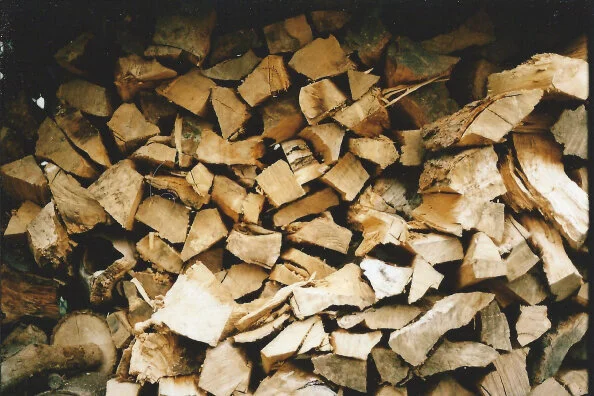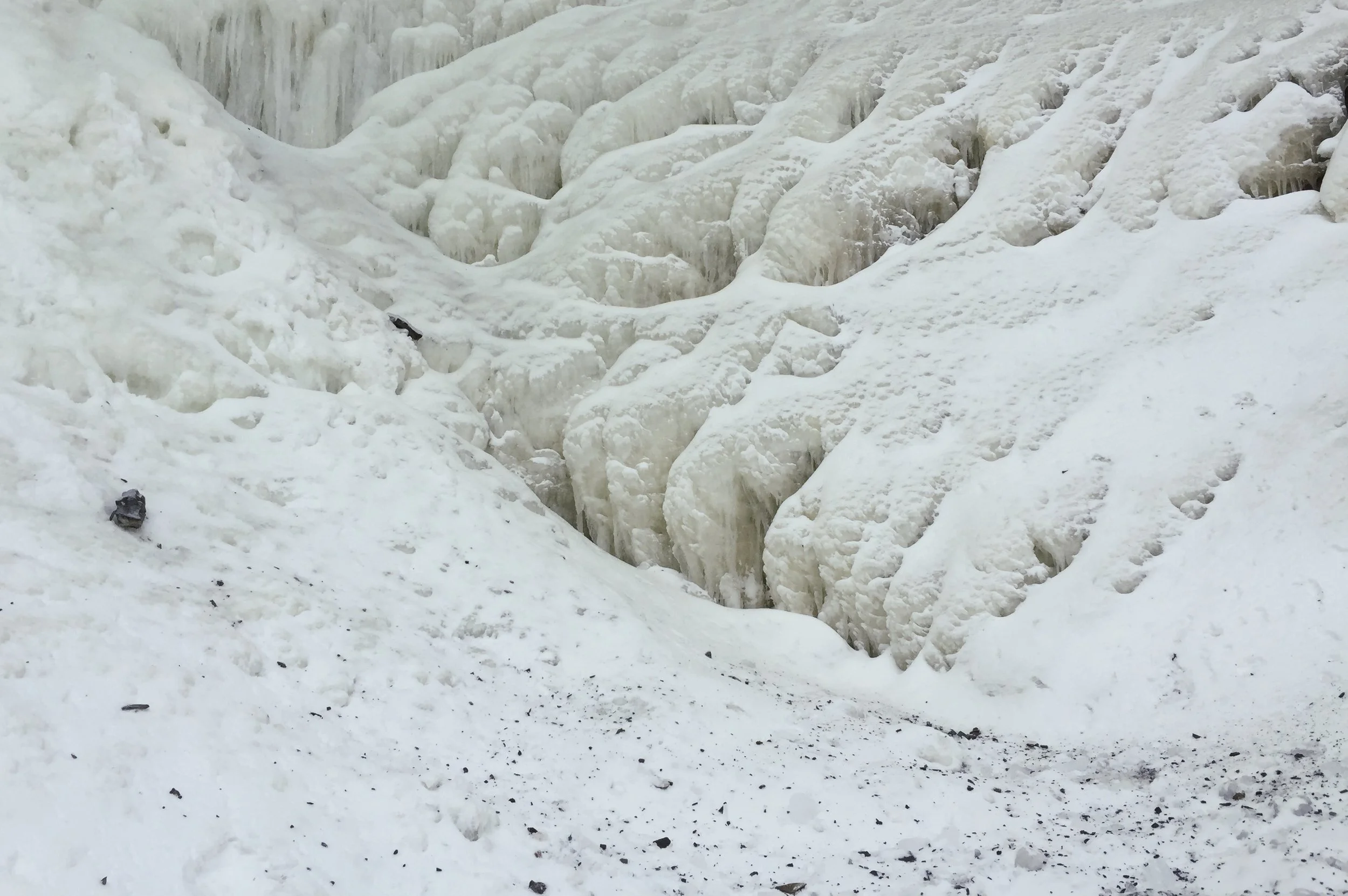Wood
I stand in the sun on a cold January morning in thick boots, flannel lined canvas pants and a long sleeve shirt. Over time I have stripped off layers, hat and scarf, jacket, wool sweater. Gloves are kept on to keep the blisters at bay, otherwise I might remove them too. Radio left at home, serenaded by the birds and the repetitive echoing clunk of logs hitting the steel wheelbarrow. I hum. I sigh. I grunt, air escaping my chest with a “hoof” from each swing of the axe. The day goes by and the pile shrinks. Another pile, more neatly stacked, grows, from bottom to top in tidily arranged rows, split wood stacked log cabin at the ends to keep the whole mass from toppling over. Smaller pieces, too fussy to arrange, haphazardly tossed into open crates. A few masses too unruly to split by hand sit in a heap, waiting for a hydraulic splitter to press them apart. This load will take me several days.
My work is made of clay, but it is made of wood too.
The animals of the forest collect their cache in the fall. Burrowing bulbs into the ground, tucking seeds into caverns of old trees. But unlike the creatures of the woods, I collect in the winter, when the sun sits low in the sky, casting long shadows and cooling my body as I work. Come spring I’ll be busy in the garden, and the work will not end until the ground freezes in November, or December. Then I’ll wait for the sun to rise high again. Now, in the in between, is the time for wood.
There is a mill ‘round the corner from the land where my kiln lives. “Round the corner”, in country terms, though in actuality more than 20km away. My wood guy, Gary, brings me the slab ends from their custom cut logs piled high in a dump truck, a potluck of hard woods in every size and shape, though not often more than 16” long. The usual suspects of maple, elm, and oak. White ash, fallen from the emerald ash borer, is always in good supply. A piece of ironwood or cherry crosses the axe’s threshold every few wheelbarrows full, and more often than not, after a few rounds with the axe, the ironwood is cast aside and destined for the splitter - aptly named, it is a beast to cleave in two by hand. If I am lucky, a load will be filled with heavy pieces of black walnut. When split in 2 or 3 the colourful centre revealed. A rainbow of purples and greys and chocolate browns. Yellow strips of pitch. Sometimes the bark as thick as my wrist - a cross section of minerals soaked up from the ground while the tree was still living. Minerals and metals that will burn and vaporize, turning my clays pink and purple, shades of yellow and peach, blues and greens. My woodworking friends would kill for these beautiful slabs, but I’ll burn them instead.
Once a year I pick up a trailer load of slab end slivers more than 12 ft long. Gary lifts them with his crane and lowers them onto the bed, the tires sagging under the weight. When unloaded at the kiln site, the metal ties holding the bundle together cut sharply, there ricochets a loud CRACK through the valley, and the whole pile rolls off the side, an avalanche of sticks and planks.
Across from the kiln, piled high, are large rounds from a neighbour’s fallen ash tree. Another neighbour’s maple. A friend’s birch. My brother in law’s pine. Yet another pile, the limbs removed of smaller branches. And another, the brush in a small hill, ready for a pair of a clippers and a quiet day methodically wading through brambles, slowly sorting them by size, arranging them in boxes.
I start each firing with twigs. A few tubes of rolled newspaper, a handle of leaves, and a match. Over several hours we build a bed of coals with bark covered branches, offcuts of maple and the occasional sliver of purple heart from a friend’s woodshop. Slowly feeding long limbs into brick openings beneath metal grates. Cleaning the site of waste, and turning it into fire.
On a cold morning in January I take a break from my axe and the pieces of fallen trees, and enter the forest. Follow the trails of white tail deer - where they’ve rubbed their antlers on young saplings, stripping them of their bark. The circles of melted snow where they lay to bed. Highways of hoof prints heading out to the fields, and back to the pines, and over to the wetlands. I sit on the edge of the frozen marsh, listen to the wind whip through the trees. Like grasses in a meadow on a sunny summer day, each one sways in the breeze.



